

Damion Smy
Ford Ranger-sized EV ute must prove itself in US before global rollout
20 Hours Ago
Simon Christie takes the top-spec Mazda BT-50 SP bush bashing to see how it compares with the segment's best.
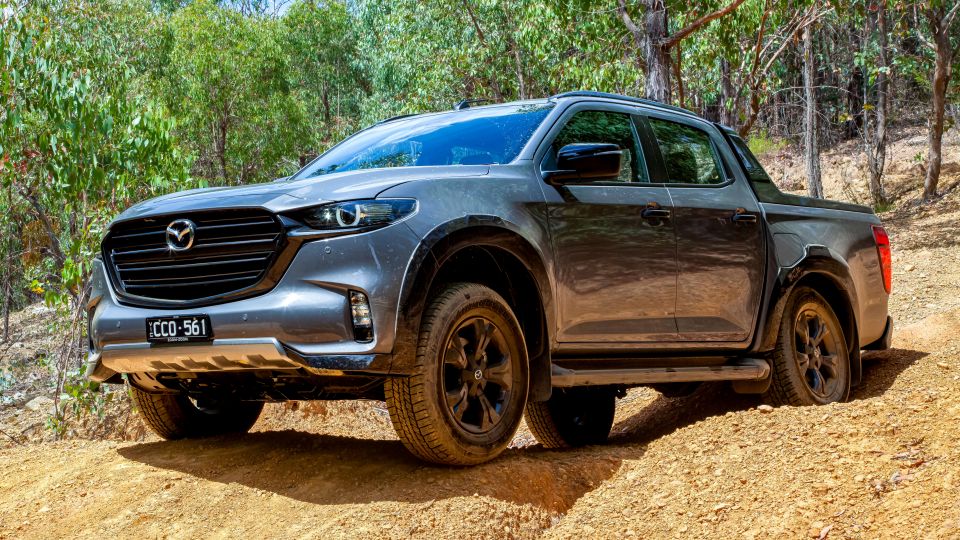
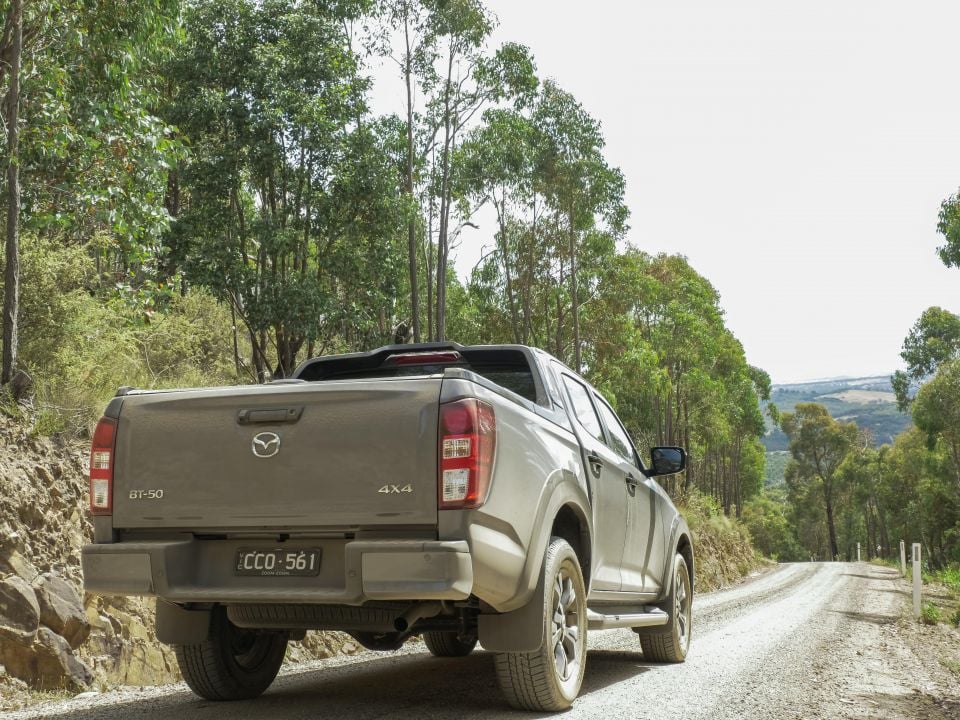

Quickly see how this car stacks up against its competition. Select any benchmark to see more details.
Where expert car reviews meet expert car buying – CarExpert gives you trusted advice, personalised service and real savings on your next new car.
This story starts well, tempers in the middle and crashes sadly at the end. But far from being a ‘spoiler’, I’m hoping you’ll hang in there with me all the way to see if and why the Mazda BT-50 SP is a let down, or not.

Let’s hold nothing back; on paper, and if you followed any of Isuzu’s hype around their current D-Max, the BT-50 should be stomping all over the Toyota HiLux and Ford Ranger – yet it isn’t – and it fails to deliver in several areas.
But just in case you missed the memo, yes, the new Mazda BT-50 is nothing more than a rebadged and rewrapped Isuzu D-Max that’s jammed (or should we say crammed?) with every promise the flashy D-Max marketing team pushed, but possibly the engineering team didn’t think through sufficiently.
Now that may sound a little harsh, and it probably is, but what we are referring to is the raft of electronic safety features that were set to impress and take the D-Max and BT-50 to a whole new level.
Like many automotive enthusiasts and eager journalists, most car buffs were initially impressed with the hype around the new Isuzu D-Max and for many good reasons; it brought a raft of upgrades and improvements that heralded an illusion of ‘listening to their customers’ and went well beyond in delivering leading-edge electronic safety features.
The news that the new BT-50 would be based on the same platform as the D-Max also had us ‘car buffs’ excited, possibly a tad surprised as well, as the Ford Ranger (the previous BT-50 platform-mate) has continued from strength to strength, yet the improvements to the D-Max were substantial and sufficient enough to have many feeling positive about the new BT-50 and its future.
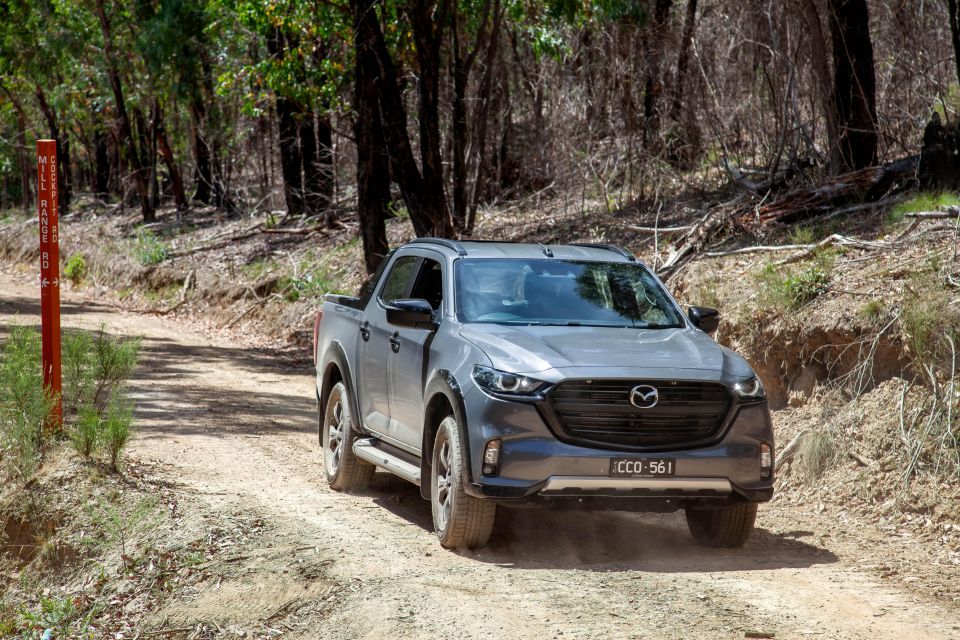
But before we give away too much, let’s get back to our review and go through the good, the bad and the average of the Mazda BT-50, and what special value (or lack thereof) the SP version brings to the table.
The current incarnation of BT-50 was launched in 2020, and the SP version arrived as part of the most recent update.
From the outside the changes amount to grey and black accents along the bodywork that do slightly improve its appearance, along with a wing over the top of the tub that aligns with the roofline. While there is nothing really wrong with the look of the original vehicle, the aesthetic improvements do enhance its presence.
Inside though, the changes are highly effective with a two-tone leather interior blending with the window ledges and dash to form and encompassing cockpit-like seating area that is both warm, protective and confidence-inspiring. It really does seem to embrace, nestle and protect you without causing any claustrophobia or feelings of being cramped.
The dash is modern and stylish without being over the top, and the only two possible letdowns for me were the shade of tan matched with the darker coloured leather, and the finish of the steering wheel which felt light, uninspiring and for want of a better term, cheap.
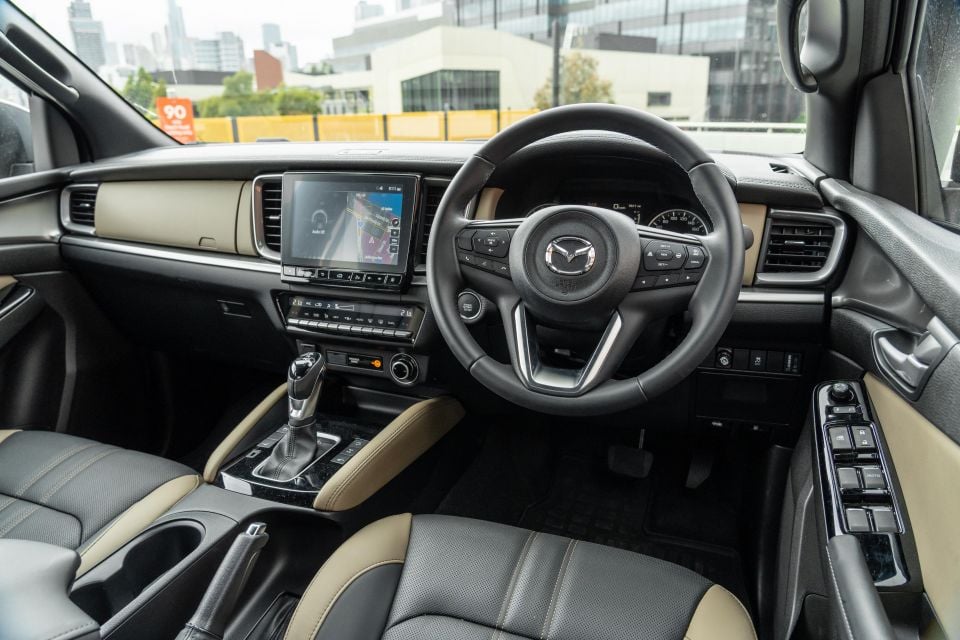
But apart from those two items, I would rate the interior as one of the best in the category for design, layout, appearance, styling and overall comfort – both physically and emotionally. Yes, it makes you feel warm, fuzzy, safe and protected.
Large side mirrors offer clear vision, wind and road noise are noticeably quieter than other 4x4s, the dash cluster is clear and pleasant (although possibly a touch wide), and the screen between the two dials is easy to read and informative.
It’s split into two halves; with the upper being constantly lit with information and graphics, and the lower half reserved for warning, engine and other status lights.
Generally speaking, the road manners are good, the suspension soft, compliant and agreeable and the vehicle layout and operation is intuitive.
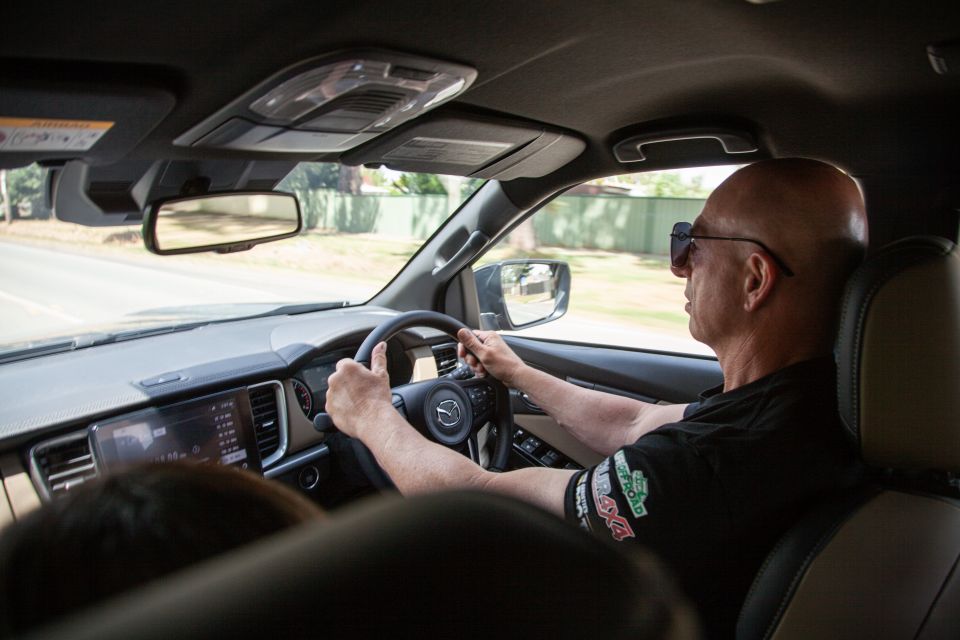
Cruising down city streets is comfortable and stress-free, and as good as those points are compared to some other vehicles we have tested, that is about where the on-road positives end.
The steering is a touch heavy at times, the bonnet vibrates like a flimsy tin sheet, the accelerator pedal is sluggish and provides very little responsiveness until it is halfway depressed, the gearbox clunks a little during some changes and at speed the steering becomes a touch vague and unnerving – we will come back to this.
The vehicle did, though, get us to where we needed to go, which overall is the intended use of most vehicles but not quite in the inspiring manner any enthusiast would expect.
This is where the BT-50 really shone for me, and in general terms did better in respect of many in its class.
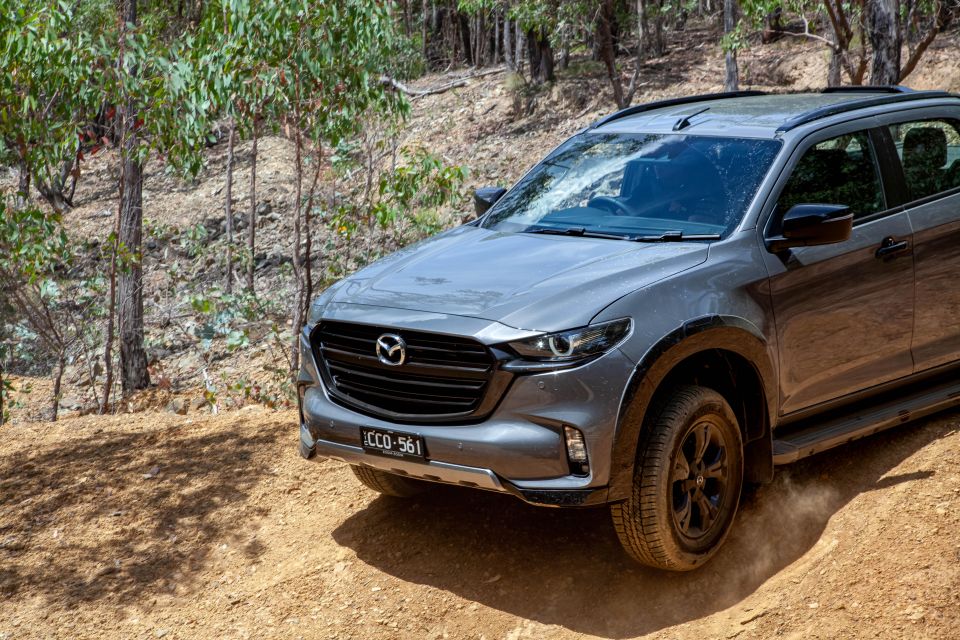
It wasn’t so much that it severely outperformed its rivals in off-road conditions, but more so that it was easy to work with, did what was asked and provided a reasonable feeling of confidence, tractability and comfort whilst doing so.
The 4×4 selector is easy to reach, engagement of both 4-High and 4-Low was quick and easy, and lights on the driver’s cluster clearly indicated which mode the vehicle was in.
Power delivery was smooth and precise, the suspension was supple and comfortable, the steering firm and accurate – which again highlights and contradicts what we experienced when driving on-road).
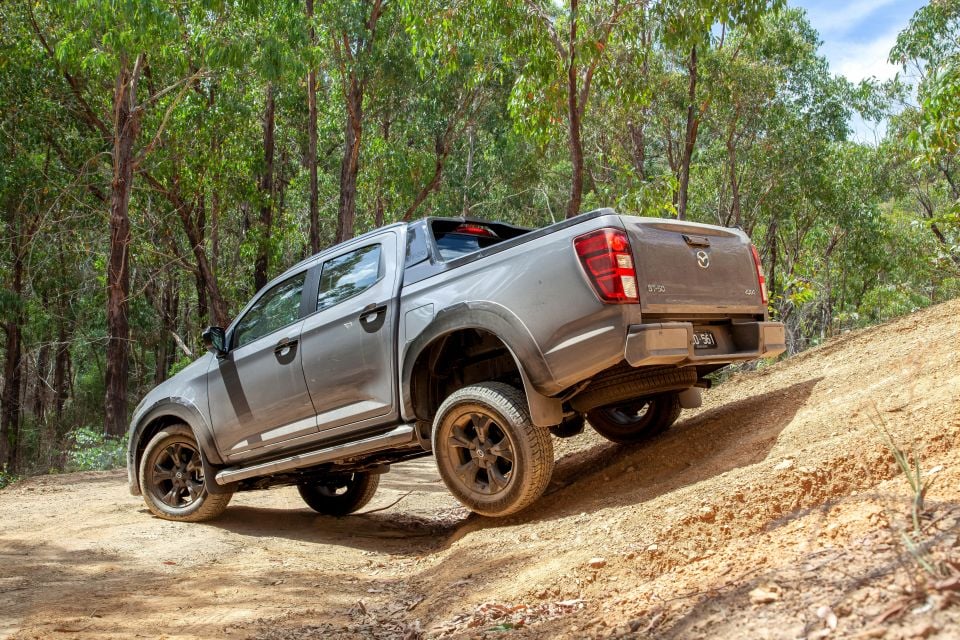
The gearing was well-controlled and offered intuitive ratios, and overall the vehicle felt safe and stable no matter what angle we put it on.
As a basic 4×4 vehicle, the BT-50 gets a solid thumbs up from me, and that really comes down to the softer suspension, low-range transfer case and rear diff lock.
Plus, as we will see a little later, that performance will easily be improved with a small investment into the right 4×4 accessories.
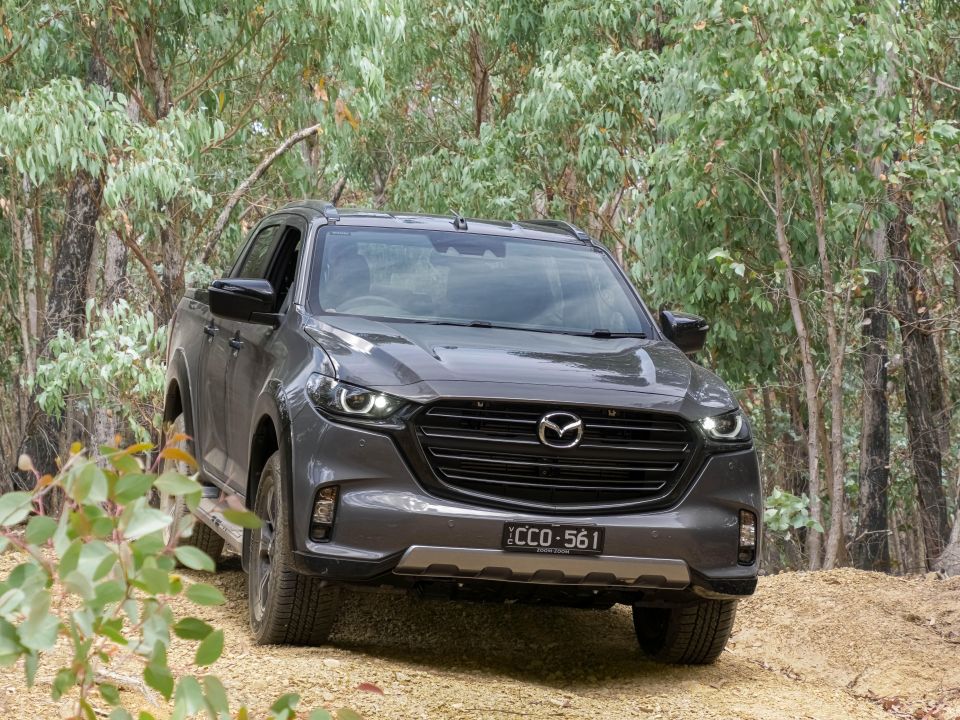
With the standard suspension (as good as it is) the BT-50, like most IFS 4x4s, quickly runs out of wheel travel which greatly limits its off-road ability.
But its rear selectable locking differential is a saving grace, and along with the dual-ratio transfer case as mentioned above, these are the main reasons the BT-50 works so well off-road.
Powered by a straight 3.0-litre four-cylinder turbo-diesel, the drive from the BT-50 is anything but inspiring.
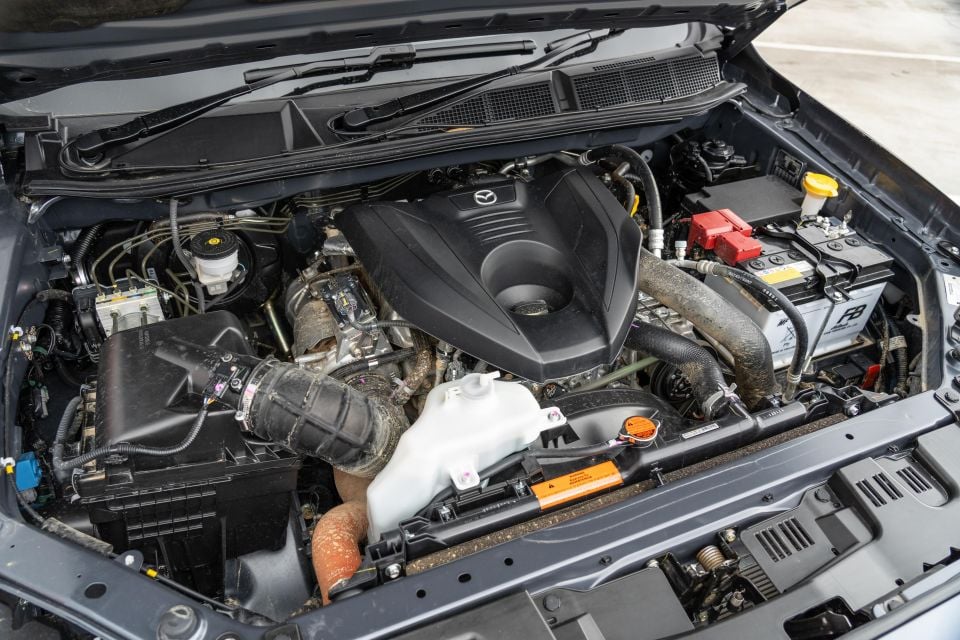
It’s sluggish and underpowered, at least for me. The six-speed auto, while sometimes a little agricultural, is well-geared and at times preferential to the eight- and 10-speed transmissions of some competitors that are frequently shifting and hunting for the optimal gear.
With 140kW of power and 450Nm of torque, the BT-50 has enough mumbo on paper but fails to deliver under the pedal, which demonstrates one of two things given that the gearbox ratios feel sufficient; one, the ECU is greatly detuned; or two, the throttle is grossly under-calibrated.
You may ask why either of these would be the case, and the answer is simple; in the search for optimal fuel economy, better emissions and a minimised risk of damage to the driveline, manufacturers set up the electronics, tuning and controls within the ECU and throttle to limit performance in lieu of the best possible emissions and economy.
The BT-50 SP suffers greatly from this but as you will read below, the answer is inexpensive and easy.
Like most segment rivals on the market, and considering this new BT-50 (apart from the recent SP) has been around for a few years, there is no shortage of quality gear and accessories to totally pimp out this sluggish ute and turn it into a much better performing ride on- and off-road.
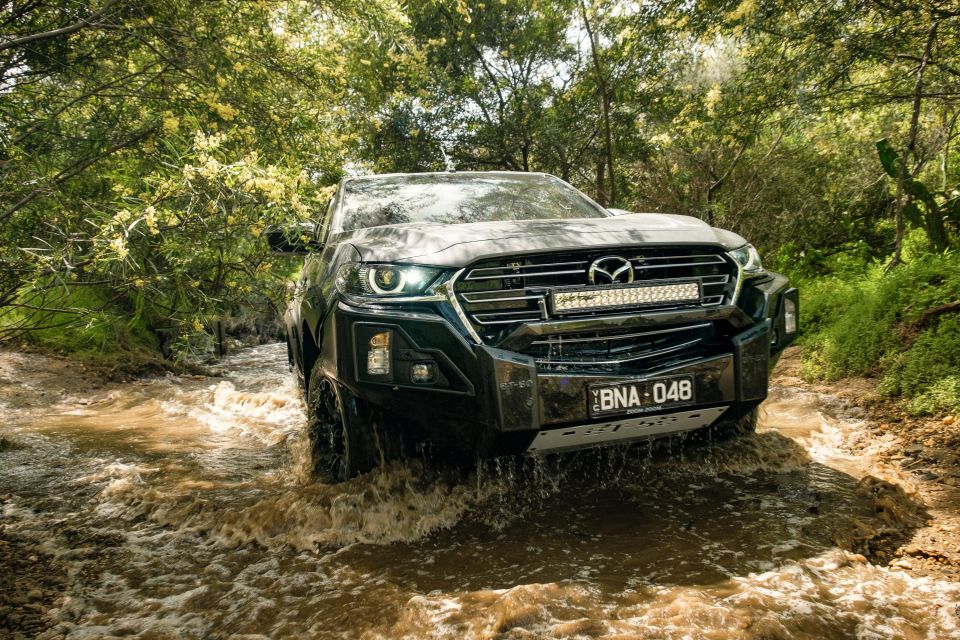
Most noticeably, a throttle controller should be the first item on any BT-50 owner’s shopping list. A unit like the EVC or EVCX from Ultimate 9 will provide the driver a diversity of settings for much improved driveability.
These throttle controllers are far from a gimmick and basically remap the signal sent from the accelerator pedal to the ECU for better acceleration response and minimised response delay. For a few hundred dollars they are one of the most noticeable and effective accessories you can purchase.
From there the sky is the limit; with piggy-back ECU chips, total ECU remaps, dyno tuning, aftermarket exhausts and intercoolers – and soon there will be modular diesel power upgrades based around high-performance replacement injectors on the market.
Standard suspension is already surprisingly good, but a quality suspension kit like Old Man Emu will provide substantial improvements to ride quality, vehicle handling as well as on- and off-road performance.
Other accessories will provide improvements across the board depending on your preferences and needs including tyres, bull bars, roof racks, canopies and plenty more.
What really hit the nail squarely into the coffin of the BT-50 for me was the drive back from the bush.
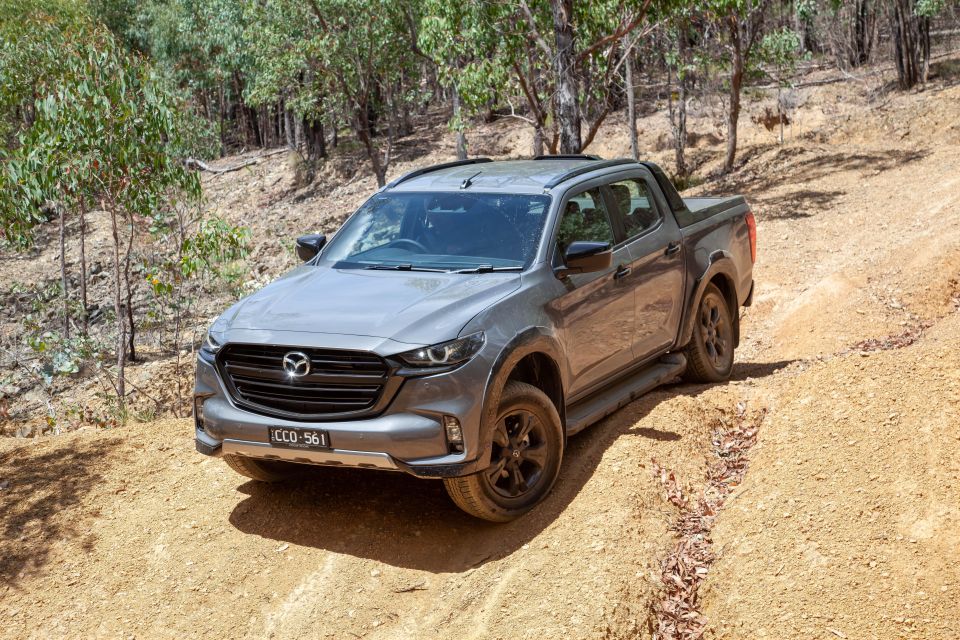
I got to see first-hand how invasive, over reactive and dangerous some of the electronic safety features could be.
Aggressively shunting the vehicle back into its lane, jamming on the brakes when it perceives a threat ahead, the loud alarms, limiting your speed when attempting to overtake, and flashing lights that highlight possible dangers while drawing your attention away from the traffic, the road and your surroundings.
OK, you can switch them off to an extent, but the ability to do so is hidden deep within the menu system and it’s not easily found. The point remains that these safety features are not well-calibrated, are too sensitive and overreactive.
But I do still have a soft spot for the Mazda BT-50; it’s a decent ute with a lot to offer despite its shortcomings. It sits in a position of mediocrity with features and styling that some will hate and others will love, at a price point that raises similar emotions.

Let’s be frank; it’s a good base vehicle, and if it ticks a few boxes for you then it is worth considering. But if you are expecting any ‘Zoom Zoom‘ excitement, forget it.
For me though, the poorly-calibrated yet highly-touted electronic safety features can be close to dangerous on the road, which is counter-intuitive to what they’re trying to achieve.
If you’re after a no-thrills yet moderately capable farm ute, the BT-50 may well be suitable. In other words, if you are the type of driver who literally sleeps at the wheel, the safety features will keep you awake and in your lane.
Conversely, if you are an enthusiast, in tune with the life of the vehicle and you are skilled, these safety features will give you a heart attack, drive you nuts or possibly get you killed
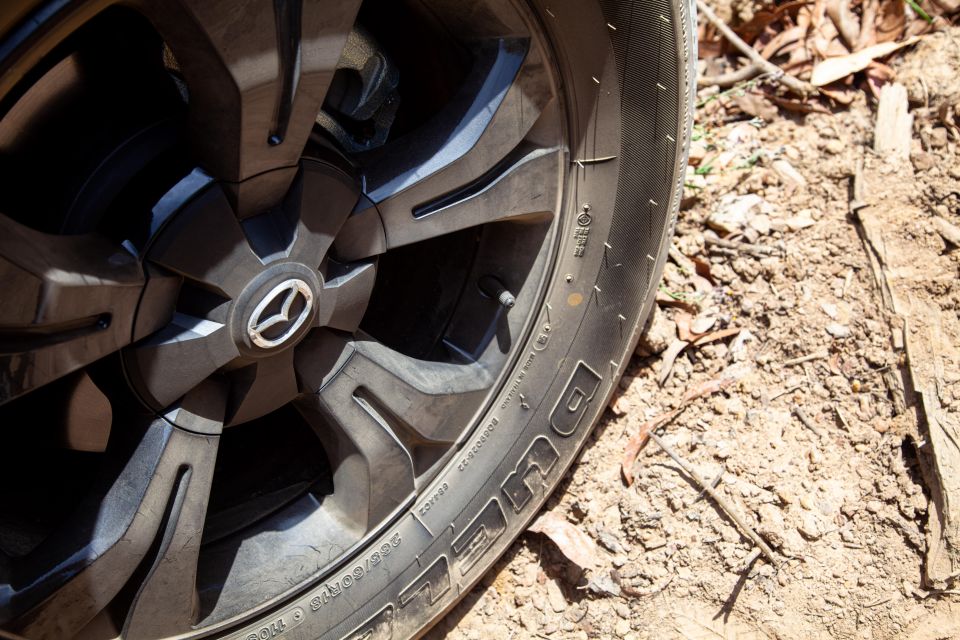
Click the images for the full gallery
MORE: Everything Mazda BT-50
Where expert car reviews meet expert car buying – CarExpert gives you trusted advice, personalised service and real savings on your next new car.


Damion Smy
20 Hours Ago


Damion Smy
23 Hours Ago


Ben Zachariah
3 Days Ago


Matt Campbell
3 Days Ago


Derek Fung
7 Days Ago


Damion Smy
10 Days Ago